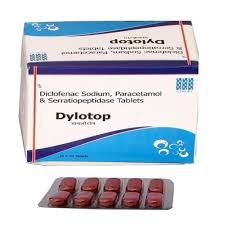
Important Information on the Top 10 Most Common Pain Medications
Top 10 most common pain medicine. Pain medications are essential tools for managing various types of pain, from acute discomfort to chronic conditions. Below is a list of the top 10 most common pain medicines, their uses, benefits, and precautions.
Hydrocodone-acetaminophen was the most commonly prescribed and dispensed pain medication through a pharmacy in 2021.
1. Acetaminophen (Tylenol)
- Uses: Treats mild to moderate pain and fever.
- Benefits: Safe for most individuals, including pregnant women, when taken as directed.
- Precautions: Overdose can lead to severe liver damage.
2. Ibuprofen (Advil, Motrin)
- Uses: Effective for pain, inflammation, and fever.
- Benefits: Commonly used for headaches, menstrual cramps, and muscle pain.
- Precautions: Prolonged use may cause stomach ulcers or kidney issues.
3. Aspirin
- Uses: Reduces pain, inflammation, and fever; often used to prevent blood clots.
- Benefits: Beneficial for arthritis and cardiovascular protection.
- Precautions: Not recommended for children due to the risk of Reye’s syndrome.
4. Naproxen (Aleve)
- Uses: Long-lasting relief for pain and inflammation.
- Benefits: Ideal for arthritis, tendonitis, and menstrual pain.
- Precautions: May cause stomach irritation; avoid long-term use without medical supervision.
5. Morphine
- Uses: Prescribed for severe acute and chronic pain.
- Benefits: Gold standard for managing postoperative and cancer pain.
- Precautions: High risk of dependency and overdose; should be used strictly under medical supervision.
6. Oxycodone (OxyContin, Percocet)
- Uses: Treats moderate to severe pain.
- Benefits: Often combined with acetaminophen for enhanced efficacy.
- Precautions: High potential for addiction and abuse; use cautiously.
7. Tramadol (Ultram)
- Uses: Manages moderate to moderately severe pain.
- Benefits: Considered less addictive than stronger opioids.
- Precautions: Can cause dizziness and risk of dependency with prolonged use.
8. Codeine
- Uses: Treats mild to moderate pain and cough.
- Benefits: Available in combination with other medications like acetaminophen.
- Precautions: May cause drowsiness and constipation; avoid alcohol while taking.
9. Lidocaine
- Uses: Local anesthetic for numbing pain in specific areas.
- Benefits: Available as a patch, cream, or injection for targeted relief.
- Precautions: Overuse can lead to toxicity, especially with large or broken skin applications.
10. Celecoxib (Celebrex)
- Uses: Treats arthritis, menstrual cramps, and acute pain.
- Benefits: Targets inflammation with fewer stomach-related side effects compared to traditional NSAIDs.
- Precautions: May increase the risk of cardiovascular issues with long-term use.
General Guidelines for Safe Use
- Follow Prescriptions: Always use medications as directed by your healthcare provider.
- Be Aware of Interactions: Inform your doctor about other medications or supplements you are taking.
- Avoid Mixing Alcohol: Alcohol can intensify side effects or increase the risk of complications.
- Monitor for Side Effects: Report unusual symptoms like severe nausea, dizziness, or allergic reactions immediately.
Choosing the Right Pain Medication
The choice of medication depends on:
- Type of Pain: Acute (e.g., surgery) or chronic (e.g., arthritis).
- Severity: Mild, moderate, or severe.
- Underlying Conditions: Health issues like liver or kidney problems may limit options.
When to Consult a Healthcare Provider
- Persistent or worsening pain despite medication.
- Concerns about dependency or misuse.
- Need for a personalized pain management plan.
These commonly used pain medications can significantly improve quality of life when used responsibly and under medical supervision. Always seek professional advice to determine the best option for your specific condition.